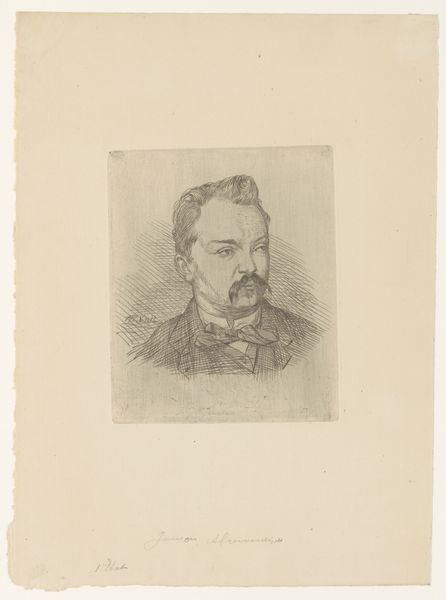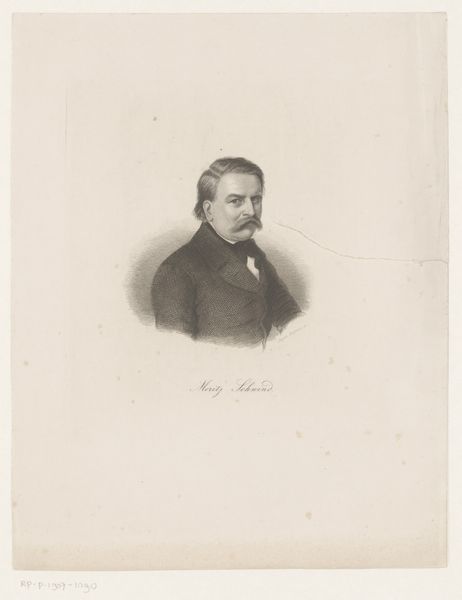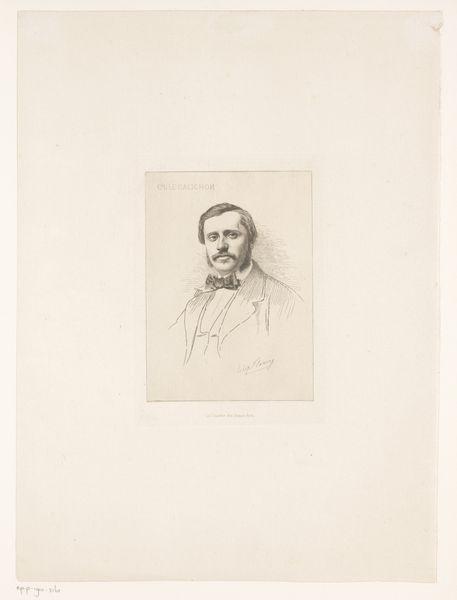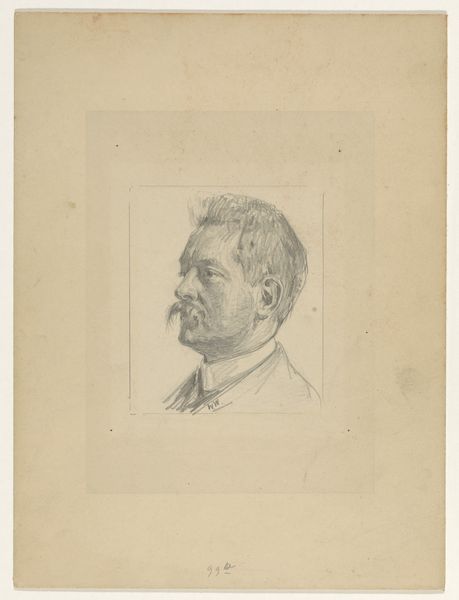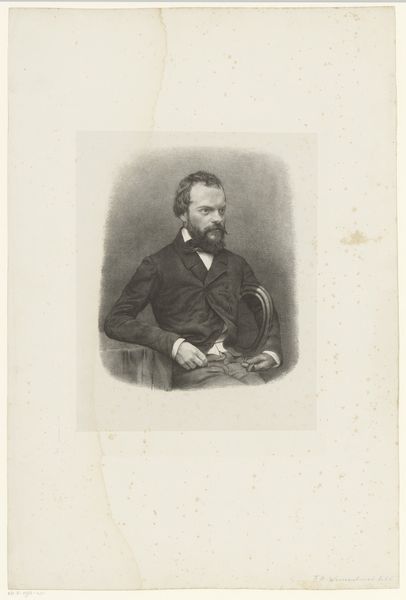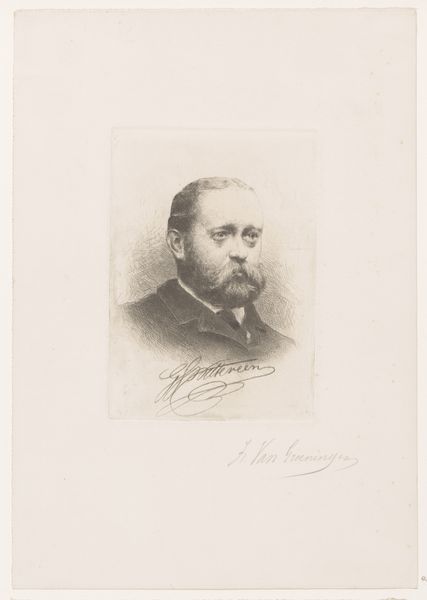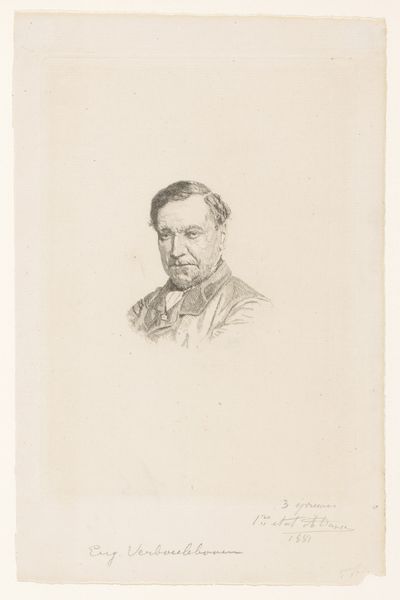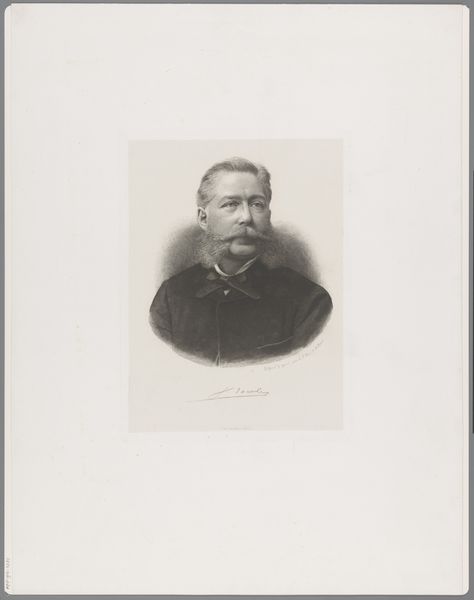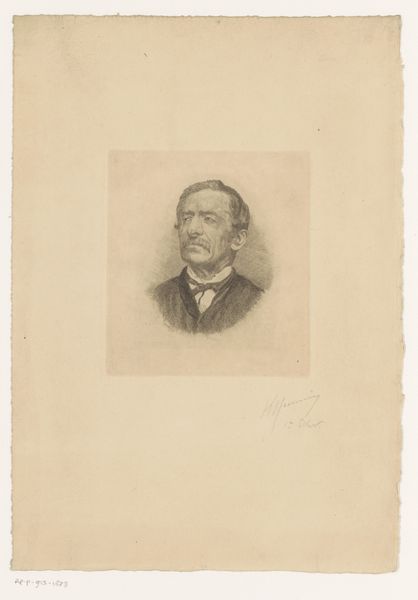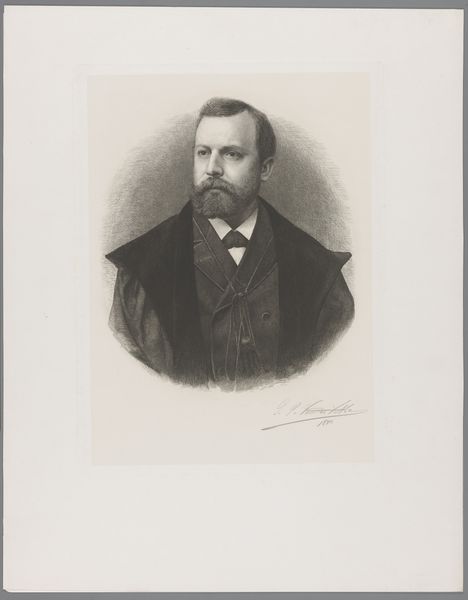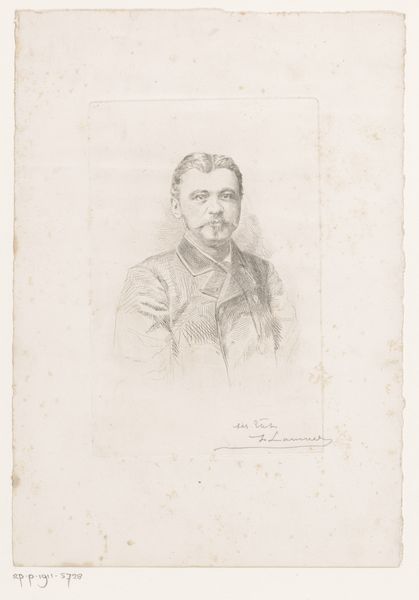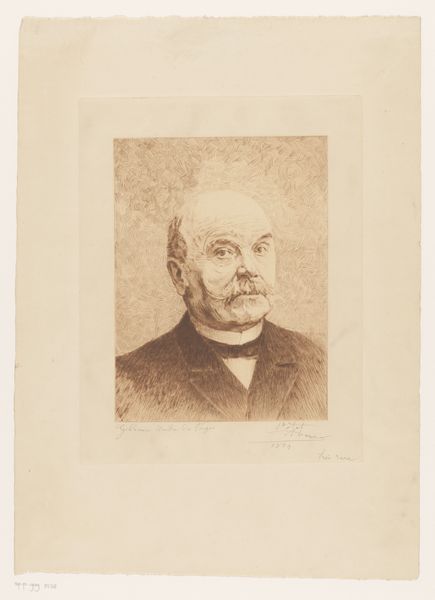
print, etching
#
portrait
# print
#
etching
#
figuration
#
realism
Dimensions: height 176 mm, width 145 mm
Copyright: Rijks Museum: Open Domain
Curator: Let's turn our attention to this intriguing piece from 1877: *Portret van een onbekende man*, or *Portrait of an Unknown Man*, by Albert Dillens. It’s an etching currently held in the Rijksmuseum. Editor: My immediate reaction? Brooding respectability. There's something about the way the light catches his moustache – a meticulous darkness rendered so skillfully in monochrome. It speaks of societal expectations and private ponderings. Curator: Exactly. Dillens' mastery of the etching technique allows him to capture such nuances. Consider how the cross-hatching defines the planes of his face, bringing depth to a two-dimensional surface. The labour involved, carefully building up the image line by line... It reveals a commitment to the craft that reflects a specific historical mode of production. These portraits become commodities, representations of social standing rendered in ink. Editor: I love that phrase: "representations of social standing rendered in ink". You're spot on about the labour. Thinking about the etcher hunched over the plate, the acidic bite, it moves beyond just replicating an image to something almost… alchemical. The print itself becomes a vessel, doesn’t it? Containing more than just the likeness. His anonymity heightens it. What stories might be etched—excuse the pun—into his skin? Curator: Indeed! The unknown subject invites speculation. Dillens gives us realistic details, but with enough mystery that it lets the mind wander freely, constructing a story around that stoic gaze. It’s a fine example of Realism, focusing on truthful representation but imbued with character and… perhaps a hint of melancholy. Editor: I find it wonderfully poignant how a material object like this print can hold so much unspoken. I mean, we analyze the line, the paper, but somehow it always points back to the ineffable—to feeling. The artist invests something that just transcends the materials used. Curator: Agreed, looking at the process—how it's created—allows one to be closer to it, as it has materiality, form, and expression all interwoven in its delicate network of etched lines. Editor: Absolutely. Seeing how meaning is manufactured shifts our engagement with images forever, perhaps making us more alert consumers but also much more appreciative of this intersection of labor, vision, and spirit.
Comments
No comments
Be the first to comment and join the conversation on the ultimate creative platform.

